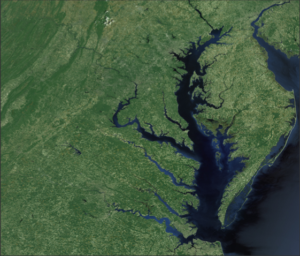USC Ag Team
The USC acts as a resource agency to farmers, districts and other entities to share ideas, skills and funding opportunities that aid operations in reaching environmental goals.
The USC Ag Team consists of SWCD technical staff from multiple counties and our USC Ag Coordinator working together to support and assist agricultural operations within the coalition. Technical assistance includes:
- documenting farm data and Best Management Practices (BMPs)
- developing watershed and site-specific agricultural plans
- implementing and evaluating practices.
Technical assistance often begins with enrolling farms in the Agricultural Environmental Management (AEM) Program. AEM acts as a planning tool to identify resource concerns within the farm operation. AEM, a voluntary program, identifies strategies to address resource concerns without negatively impacting the economic viability of the farm. Our overall goal for agricultural management strategies is to improve water quality within the Chesapeake Bay Watershed.
Ag Team Goals
- Increase knowledge and understanding of BMP Verification Program.
- Increase Nutrient Management Planning efforts.
- Continue to seek additional funding opportunities.
- Increase Best Management Practice implementation to improve water quality locally, and in the Chesapeake Bay.
- Increase capacity within district offices through addition of technical and engineering staff.
Targeted 2024 Projects
- Development of an Online Record Keeping Application
- Increase implementation of Urban Nutrient Management Planning
- Increased focus on capturing all implemented BMP’s and data reporting prior to 2025
- Coordinate Round 2 RCPP Project Funding
- Provide trainings to SWCD and partners as needed
There are many impacts of water pollution throughout the Chesapeake Bay Watershed. Pollution, including excess Nitrogen, Phosphorous and sediment in  surface waters, is common throughout the watershed. This pollution affects local streams, but compounds when those streams empty into the Bay, and dramatically affects the Chesapeake Bay itself.
surface waters, is common throughout the watershed. This pollution affects local streams, but compounds when those streams empty into the Bay, and dramatically affects the Chesapeake Bay itself.
The Chesapeake Bay watershed is impacted by pollution sources from agriculture, stormwater runoff, sewage, and air pollution. Nitrogen and phosphorus pollution are the most serious problems facing the Chesapeake Bay watershed. This pollution can be attributed partially to agricultural runoff accumulating throughout the watershed.
Too Many Nutrients
Too much nitrogen and phosphorus can cause algal blooms that block sunlight to underwater vegetation. When the algae dies, decomposition consumes available oxygen creating a “dead zone.” Dead Zones occur where dissolved oxygen levels are too low to sustain marine life.
The “dead zone” in the Chesapeake Bay has expanded over the past several decades, coinciding with increasing levels of nitrogen and phosphorus in the Chesapeake Bay watershed due greatly in part to human activity.
To alleviate this environmental problem, the federal government has put into place regulations defining the Total Maximum Daily Load (TMDL) for the Chesapeake Bay. TMDL is the maximum amount of a pollutant that a water body can receive while continuing to meet water quality standards according to the U. S. Clean Water Act.
The USC Ag Team promotes local implementation of water pollution control measures and practices to improve water quality within the Chesapeake Bay Watershed. We place an emphasis on the importance of implementing best management practices in the headwaters to meet Total Maximum Daily Load (TMDL) Regulations. We are also responsible for tracking all of the BMPs installed throughout our watershed, and providing that data to the Chesapeake Bay Program and their modelers. Visit our BMP Data Collection page for information on how and why we collect BMP data.
NYS DEC – Working to conserve, improve and protect New York’s natural resources and environment and to prevent, control pollution and enhance the health, safety and welfare of the people of New York.
NYS Department of Ag and Markets – Fostering a competitive food and agriculture industry that benefits producers and consumers alike.
New York State Soil & Water Conservation Committee – Working to advance comprehensive natural resources management through the support of local Soil and Water Conservation Districts.
Cornell University Cooperative Extension – Puts knowledge to work in pursuit of economic vitality, ecological sustainability and social well-being. We bring local experience and research-based solutions together, helping New York State families and communities thrive in our rapidly changing world.
United States Department of Agriculture – Providing leadership on food, agriculture, natural resources, rural development, nutrition, and related issues based on sound public policy, the best available science, and efficient management.
Farm Service Agency – Striving to equitably serve all farmers, ranchers, and agricultural partners through the delivery of effective, efficient agricultural programs for all Americans.
Natural Resources Conservation Service – Providing America’s farmers and ranchers with financial and technical assistance to voluntarily put conservation on the ground, not only helping the environment but agricultural operations too.
http://nmsp.cals.cornell.edu/guidelines/nutrientguide.html
http://nmsp.cals.cornell.edu/guidelines/factsheets.html
http://nmsp.cals.cornell.edu
www.sustainablegenetics.com
www.thegrasswhisperer.com
www.kiwifence.com
www.kencove.com
www.eatwild.com
www.umaine.edu/grazingguide/Main%20Pages/Grazing%20Links.htm
http://dfbs.aem.cornell.edu
http://forages.org/
https://www.nrcs.usda.gov/wps/portal/nrcs/main/ny/technical/landuse/pasture/
https://www.agriculture.ny.gov/SoilWater/land-and-water.html
www.apppa.org
https://www.rd.usda.gov/ny
Ag Team Events
Ag Team News
Cody Farms awarded 40th Madison County Conservation Farm of the Year
by USC Correspondent and Grass Whisperer - Troy Bishopp CAZENOVIA, NY – Most people see dirt. The farmer




